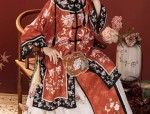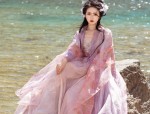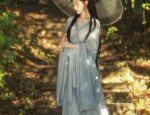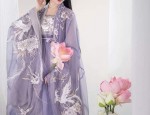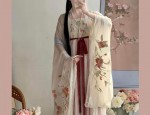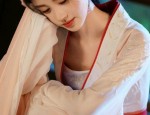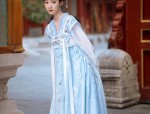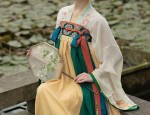Song-Style Hanfu:Splendor of Flower Festival in Ancient China
In the tapestry of Chinese historical fashion, the Song-style Hanfu stands out as a vibrant testament to the beauty and elegance of traditional Chinese culture. As the world delves deeper into the essence of Hanfu, the Flower Festival, a pivotal event in the Chinese calendar, is celebrated with exquisite attire that embodies the essence of Song-style Hanfu.
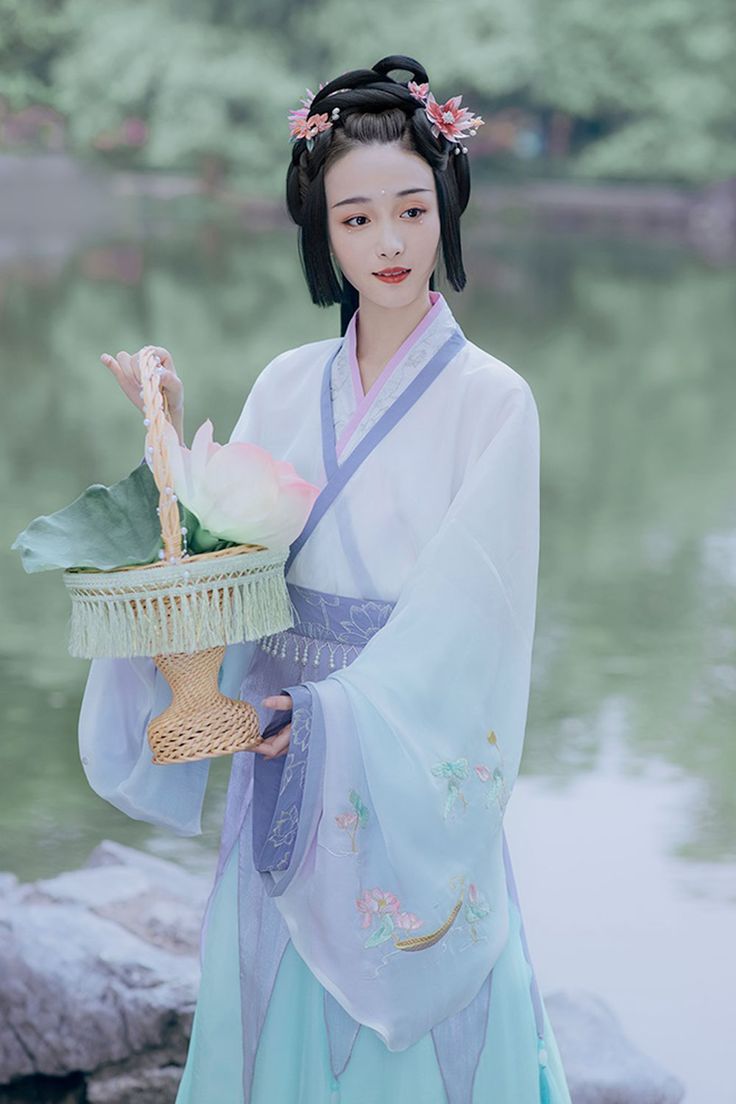
The Song Dynasty (960-1279 AD), a pivotal period in Chinese history, witnessed a flourishing of cultural and artistic expressions. The Song-style Hanfu, a symbol of this era’s fashion, was a blend of simplicity and sophistication. This attire, often characterized by its loose-fitting and elegant design, was worn during the Flower Festival, an occasion that celebrated the beauty of nature and the renewal of life.
The Flower Festival, also known as Huazhao Festival, falls on the day of the month when flowers bloom at their peak. It is a time for people to admire flowers and pray for good luck in love and marriage. During this Festival, women adorned themselves in exquisite Song-style Hanfu, donning vibrant hues and intricate designs that reflected their beauty and grace.
The Song-style Hanfu worn during the Flower Festival featured intricate patterns and designs that were often inspired by nature. The use of floral motifs was particularly prevalent, with flowers delicately embroidered or printed on the clothing. The soft colors of the flowers were beautifully contrasted with the elegant hues of the fabric, creating a harmonious blend of nature and art.
The attire typically consisted of a long robe called a chan that was worn over a pair of trousers or leggings. The robe was often adorned with intricate patterns and designs that covered the entire garment, emphasizing the wearer’s figure. The use of rich silk fabrics and exquisite embroidery techniques gave the attire a luxurious feel that was both comfortable and stylish.
In addition to the exquisite clothing, women also adorned themselves with jewelry and accessories that complemented their Hanfu. Delicate jewelry pieces such as earrings, necklaces, and bracelets were often made from precious metals and gemstones, adding a touch of elegance to their attire. Fans and umbrellas were also used as accessories that not only added to the beauty of the outfit but also served as symbols of protection from the sun and rain.
The celebration of the Flower Festival in Song-style Hanfu was not only about the beauty of the attire but also about honoring nature and its bounty. It was a time for people to come together and celebrate the beauty of life, expressing their love and appreciation for nature through their attire and actions.
Today, the revival of traditional Chinese culture has led to a renewed interest in Hanfu and its associated festivals. The Flower Festival, celebrated in Song-style Hanfu, has become a symbol of traditional Chinese culture and its beauty. As more people embrace this traditional attire, they also embrace the essence of Chinese culture and its rich history.
In conclusion, Song-style Hanfu, worn during the Flower Festival, is a testament to the beauty and elegance of traditional Chinese culture. It represents a blend of ancient tradition and modern revival, reflecting a deep appreciation for nature and its bounty. As we celebrate the beauty of this festival, we also celebrate the essence of Chinese culture that has been passed down through generations.
In today’s world, where globalization has led to a melting pot of cultures, the celebration of traditional festivals like the Flower Festival in Song-style Hanfu serves as a reminder of our rich cultural heritage. It encourages us to embrace our roots and celebrate our cultural identity while also respecting and appreciating other cultures. As we delve deeper into the essence of Hanfu and its associated festivals, we discover a world of beauty and tradition that is both ancient and ever-evolving.

 Previous Post
Previous Post

